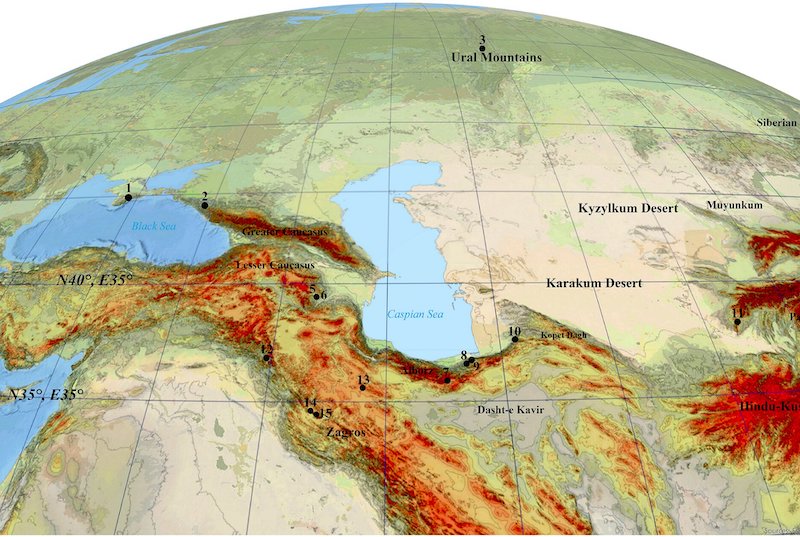The migration patterns of Neanderthals from Europe to the East have been a subject of keen interest among researchers. Modeling the Neanderthal migration, investigators have identified the southern region of the Caspian Sea in Northern Iran as the most likely route. This revelation suggests the presence of undiscovered archaeological sites along the less-explored areas along this corridor.
Mapping the Migration
The research focuses on the computer modeling of Neanderthal expansion along hypothetical Northern and Southern Caspian routes based on existing archaeological and physiological data. These routes open up potential research opportunities in lesser-known regions of Iran and Central Asia predicted to be ideal Paleolithic habitats.

A previous genetic study by the Max Planck Institute for Evolutionary Anthropology associated Neanderthals in Uzbekistan and the Altai region of southern Siberia with European origins. The question arises: How did Neanderthals reach these locations?
Charting the Corridor
To search for the Least-Cost Path (LCP), researchers utilized QGIS, an open-source geographical information system layered with bio-geographical data on past climatic conditions. LCP models consider factors such as climate, resource abundance, and advantages for sustenance along the route, akin to a GPS system navigating around obstacles.

Researchers applied LCP analysis to model potential migration routes between two known archaeological cave sites in the Caucasus (one with Micoquian and the other with Mousterian cultural materials) and cave sites in the Altai Mountains of Russia. These cultural material sets represent tool and artifact differences between regions separated by high mountains, suggesting the possibility of two distinct Neanderthal lineages entering and leaving the area.
Optimal Living Conditions
Using climate data from various sources, researchers sought regions with minimal climate change and stable habitats for plants and animals. Focusing on the relatively humid and temperate South Caspian Sea corridor due to its stable conditions, this area emerges as an ideal path for expansion and settlement.
This region not only serves as an excellent exit from Europe but also a welcoming gateway for the migrations of modern humans (Homo sapiens) from Africa and the Eastern Mediterranean to Europe. Hence, it holds the potential to be a significant cross-cultural meeting point between the two species.
For hundreds of thousands of years, Neanderthals were the most advanced humans in Europe. They engaged in cave art, cared for their sick, controlled fire for warmth and cooking, and hunted the largest game. Neanderthals were also the most widespread human species of their time, ranging from the western and northern parts of Europe to as far south as Israel and Palestine, and eastward to Central Asia and Siberia. As our genomic history reveals, modern humans interbred with Neanderthals numerous times in various locations, making Neanderthal history an integral part of our narrative.



